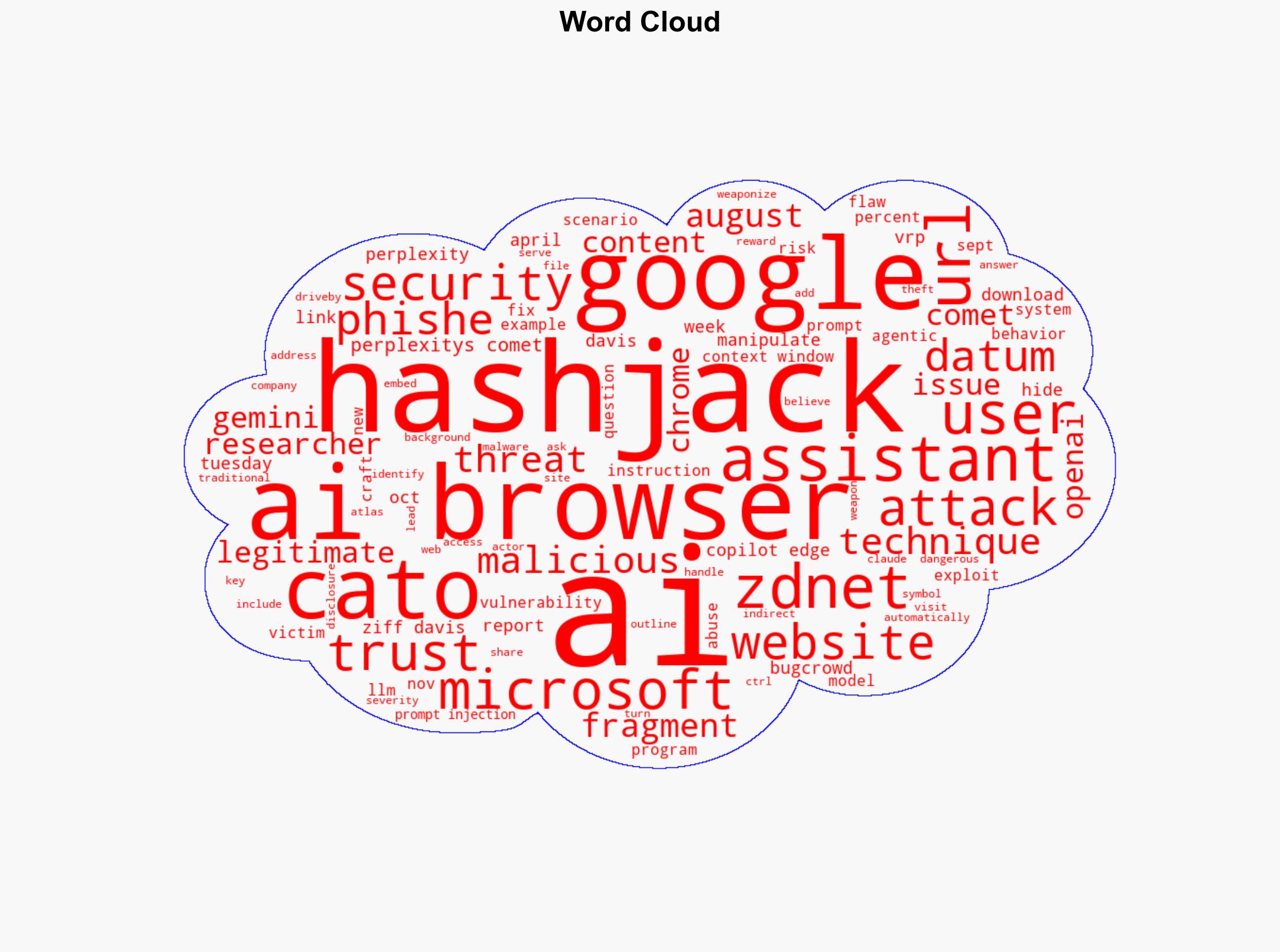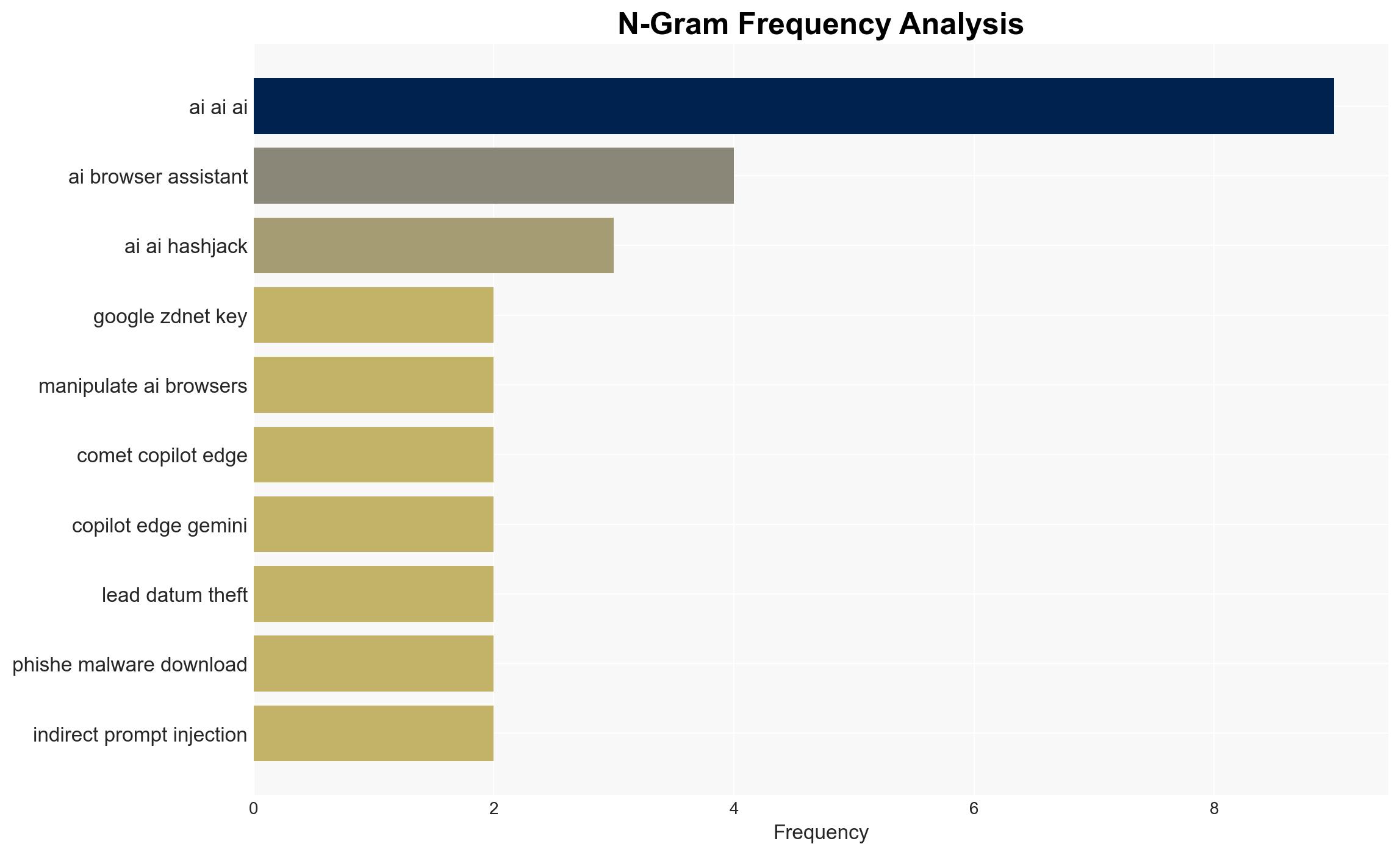Use AI browsers Be careful This exploit turns trusted sites into weapons – here’s how
Published on: 2025-11-25
AI-powered OSINT brief from verified open sources. Automated NLP signal extraction with human verification. See our Methodology and Why WorldWideWatchers.
Intelligence Report: AI Browser Exploitation via Hashjack Attack
1. BLUF (Bottom Line Up Front)
With a moderate confidence level, the most supported hypothesis is that threat actors are increasingly leveraging AI browser vulnerabilities, specifically the Hashjack technique, to conduct sophisticated cyberattacks without needing to compromise traditional web domain security. Recommended actions include enhancing AI browser security protocols and increasing user awareness of potential AI browser manipulations.
2. Competing Hypotheses
Hypothesis 1: The Hashjack technique represents a significant shift in cyberattack strategies, exploiting AI browser vulnerabilities to bypass traditional security measures.
Hypothesis 2: The Hashjack technique is an isolated incident with limited applicability, primarily due to its reliance on user trust and specific AI browser configurations.
Hypothesis 1 is more likely due to the increasing integration of AI in web browsers and the potential for widespread impact as AI browsers become more prevalent. The sophistication of the technique and its ability to exploit user trust without requiring domain compromise supports this hypothesis.
3. Key Assumptions and Red Flags
Assumptions: It is assumed that AI browsers will continue to be integrated into mainstream web browsing, increasing the attack surface for techniques like Hashjack. Additionally, it is assumed that users generally trust AI browser assistants, making them susceptible to manipulation.
Red Flags: The reliance on user trust and the complexity of the attack may limit its effectiveness if users become more aware of such vulnerabilities. The lack of direct evidence of widespread exploitation could indicate either a nascent threat or a highly targeted attack strategy.
4. Implications and Strategic Risks
The Hashjack technique poses significant cybersecurity risks, potentially leading to data theft, credential harvesting, and the spread of misinformation. Politically, it could undermine trust in digital platforms and AI technologies. Economically, successful attacks could result in financial losses for individuals and organizations. Informationally, the technique could be used to manipulate public perception by spreading false information through trusted channels.
5. Recommendations and Outlook
- Enhance AI browser security protocols to detect and mitigate Hashjack-like techniques.
- Conduct awareness campaigns to educate users about the risks associated with AI browser manipulations.
- Develop partnerships between AI developers and cybersecurity experts to address potential vulnerabilities proactively.
- Best-case scenario: AI browser vulnerabilities are patched, and user awareness reduces the effectiveness of Hashjack attacks.
- Worst-case scenario: Widespread exploitation of AI browser vulnerabilities leads to significant data breaches and loss of trust in AI technologies.
- Most-likely scenario: Incremental improvements in AI browser security and user awareness mitigate the immediate threat, but ongoing vigilance is required as new techniques emerge.
6. Key Individuals and Entities
Researcher teams from Cato Networks and other cybersecurity firms are pivotal in identifying and disclosing these vulnerabilities. Companies like Google and Microsoft, whose browsers are affected, are key stakeholders in addressing these security challenges.
7. Thematic Tags
Cybersecurity, AI Vulnerabilities, Browser Security, Data Theft, Misinformation
Structured Analytic Techniques Applied
- Adversarial Threat Simulation: Model and simulate actions of cyber adversaries to anticipate vulnerabilities and improve resilience.
- Indicators Development: Detect and monitor behavioral or technical anomalies across systems for early threat detection.
- Bayesian Scenario Modeling: Forecast futures under uncertainty via probabilistic logic.
Explore more:
Cybersecurity Briefs ·
Daily Summary ·
Support us





